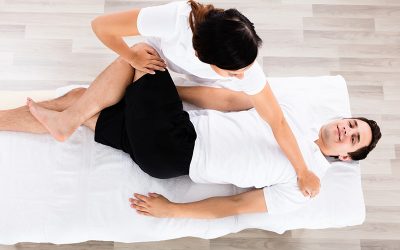
[Lidia De Nicola – Aromatherapist]
Headaches are common symptoms that may be due to a large variety of causes such as stress, tension, anxiety, allergies, constipation, hunger, muscle tension, hormonal imbalance, the use of alcohol, drugs, or tobacco or exposure to pollution among others.
Many headaches previously considered to be tension, are secondary to disorders of the neck, eyes, teeth, TMJ (temporomandibular joint syndrome). (1)
In the management of headaches is important to consider the following:
- Keep a food diary of foodstuff or drinks that may trigger factors
- Eat a well balanced diet
- Practise a healthy lifestyle,
- Learn relaxation therapy, meditation techniques and yoga
- Consume plenty of water daily
- Walk daily for 30 minutes
It is important to identify the cause of a headache before selecting the essential oil and method of application.
For example:
- A headache triggered by a long of mental effort: i.e preparing for examinations would be best treated with Rosemary essential oil (Rosmarinus officinalis).
- A headache associated with anxiety and stress would be best treated with Lavender essential oil (Lavandula Angustifolia).
- A headache associated with allergies and sinus congestion, would be best treated with Roman Chamomile (Chamaemelum nobile) and Eucalyptus (Eucalyptusglobules) essential oils.
- Migraine headaches may be treated with cold compresses of peppermint(Mentha X piperita) and lavender (Lavandula Angustifolia) essential oils
The method of application is very important, in some patients a massage may aggravate a headache, therefore a cold compress or inhalation would be more suitable.
Compresses are generally recommended when the affected area or condition is too painful to massage and effective to use with essential oils to relieve in the case of headaches.
Always when preparing a compress use a clean cloth, a clean handkerchief or a clean face washer. To make a cold compress use a dilution of essential oils of to 5 drops in 200ml of cold water, dip the cloth into the solution and wring it so it would not drip, then cover the are being treated with the cloth. Place a plastic wrap over the compress and then a towel on top. Leave it as longer as required. Always keep the compress moist and renew to keep the primary effect cold.
Inhalations are great as essential oils are diffused into a room having a multitude of effects. There are different methods of inhalation:
Direct inhalation: Apply 1-2 drops of neat essential oils to a tissue or clean handkerchief, holding close to the nose for a few moments inhaling the vapours. Another way is to add 5-10 drops of the essential oils to a bowl of steaming water and breathe the vapours emitted. Please be careful when handling steaming water, make sure another person is with you!
Vaporisers and diffusers: these are effective but remember never leave a burning object unattended and never allow the oil and water in the oil burner to dry out! There are a large selection of vaporisers and diffusers in the market to choose from and remember to follow the instructions provided by the manufacturer as each vaporiser or diffuser is different.
General Advice
Use a hot bottle or a hot towel to relax the neck and shoulder muscles, which can cause muscle contraction headaches when they are too tight. (2)
Bibliography
- – Murtagh J. General Practice. 2nd The McGraw-Hill Companies Inc, Australia, 1998
- Balch J, Balch P. Prescription for nutritional healing. Avery Publishing Group, USA, 1997
Any advice contained within this article is general advice only and is not a substitute for your health care professional’s evaluation and assessment of your symptoms and condition. Please seek advice as needed.


